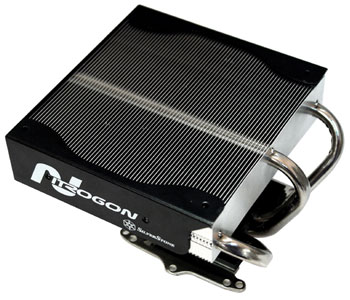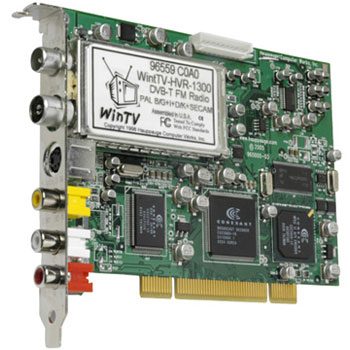Thursday, 23 August 2007
After a break in Hungary, I came back to this project.
To cut a tale of trying out the PSU from my windows desktop in the new box and from the new box in my windows PC short, after a bit of boshing about it finally works. To a point. I cannot, for the life of me, get the front panel power button working. I'm still messing about turning it on by shorting the power pins with a screwdriver.
On to installing linux.
In the end I decided to try out Ubuntu 7.04 as a first foray into Linux. I don't know who makes up the version code names for Ubuntu, but Feisty Fawn? Oh please.
Installing it is an absolute breeze though, even for a complete linux novice. Download an ISO from their website, burn it to a cd, make sure the optical drive is first boot device and let it boot.
I could write a poorly-informed installation guide, but there's a very comprehensive and knowledgeable one written here.
The only trouble I had was with screen resolutions. Initially, when I ran it with the default option from the CD, the bottom of the install wizard, with the Forward/Back buttons on it, was below the bottom of the screen. Evidently not designed for widescreen resolutions. After that it was plain sailing to install. After installation it took a little bit of reading and messing about to get more screen resolutions added that weren't the standard 4:3 ratios. It all came down to adding a bit to the /etc/X11/xorg.conf file.
Once it had all installed, I could go and select which packages to install or uninstall from the repositories.
That's as far as I got. Next stage is to get the case switch working, and to add the TV card.
Monday, 13 August 2007
I put the essential bits into the case; Motherboard, processor with the stock AMD cooler, the two sticks of RAM, and a Hard disk on SATA1, and a case fan plugged into the motherboard. Then I stuck the power cords into the motherboard, connected the power switch to the (very tiny) pins on the front panel header. The power led was on and I was feeling quite hopeful, but clicking the power switch...
nothing
No fans. No beep code. Not even a "phhhhut" and smoke.
Ho hum. Looks like the power supply or the motherboard will need to be RMA'd.
Friday, 10 August 2007

Tuesday, 7 August 2007
First post
This is going to be a journal of me building a MythTV HTPC, with a starting point of almost exactly zero knowledge of linux, and a similarly limited amount of knowledge of TV cards, remotes, vfds or IR blasters.
What I need:
- DVD playback and burning.
- TV recording from Terrestrial Freeview (DVB-T) and from NTL Cable. Ideally recording from one and watching the other.
- Play and download divx, xvid etc. files
- MP3 Jukebox
Where I'm at:
I've ordered and received most of the bits now.
Case:

Antec Fusion v2 - the only truely more-expensive-than-I-absolutely-need part in the build (well maybe the tv card is in this category too). Not entirely cheap at £110, but not the priciest htpc box on the market.
It's lovely. Brushed anodised aluminium front bezel with a nice vfd and big volume knob. Looks much more like a high-end amp than a beige pc box. Only the exposed usb and firewire ports give it away.
It comes with a pair of 120mm exhaust fans. I'm going to blank out one fan bay, and replace the remaining fan with an 8dB(a) Noctua job. Those Austrians and their engineering...
Motherboard:
Asus M2NPV-VM. No pictures of this one: it's just a motherboard and this isn't a hardware review. It comes with a TV-out backplane with S-video, Component and Composite video. Ideal for my purposes - my TV doesn't have DVI or HDMI inputs, but if / when I get a tv with digital input, I can either plug in a DVI cable or use a DVI to HDMI cable. At this point, linux and HDCP don't talk, so it's not an issue. Plus it takes 800 MHz DDR2, and won't need a separate video or sound card. And it's only £50 or so.
Processor:
After a bit of a saga trying to find a 35W 3800+ (which I might make a post about), I've ordered the AMD BE-2350. This is a brand new 65nm part that is one of the first of AMD's to ditch their processor equivalence numbers. Apparently the new parts will be less cryptic than the last scheme. Anyway, the BE-2350 is a 2.1GHz part that has a TPD (Thermal Power Design) of only 45 Watts. It seems it runs very cool at 45W or overclocks like a beast if you want it to, but sod overclocking; this is a media centre. Again, it's not an expensive processor: it's about £55 delivered, which compares extremely well to the socket 479 Core2 Duo mobile processors that are the alternative for media centre PCs, which start from nearer £130.
I decided to go for miniumum noise in the system and go for a Scythe Ninja+ cooler. It's a monster with lots of heatpipes and a 120mm fan. Again, this is going to be replaced by a 800RMP, 8dB(a) Noctua fan. One good reason for using this, other than its huge cooling area is that on an AM2 socket, the fan is mounted to blow air straight out the side vent in the Antec Fusion case.
I'll try to make a post later when I'm putting it all together to show how this works, providing of course that it fits on the motherboard without crushing the RAM or mosfets. (Did I mention it was enormous?)
TV Card:
An essential part of any media centre pc is the TV card. Using linux introduces a couple of wrinkles though. From what I've read, the hardware encoding/decoding on many cards isn't supported. Yet.

I've gone for the Hauppauge 1300 with Media Center kit. The media centre kit basically means you get a remote, IR receiver and IR blaster with your card. The IR receiver is probably surplus to requirements, since the case has an IR receiver built into the VFD.
Rather than get a dual dvb-t card, I need one with s-video input like this one, so I at least stand a chance of getting the cable box to provide something. This one takes a dvb-t RF signal, and has s-video, composite video and audio inputs. Whether or not I can get them all working with 1 remote control under linux & MythTV remains to be seen.
If it doesn't work with both sources, I can always add a second dvb-t card.
RAM:
I've gone for 2 Gigs of Corsair 800MHz DDR2 (5-5-5-15). I decided anything more was probably overkill - still, for £65 or so, it seems like a good deal. From my reading of various forums and so on, TV encoding without the help of dedicated MPEG2 encoding hardware (still under development for linux), anything less than 1 Gig was asking for trouble.
Drives:
Bought a SATA Asus DVD writer. Nothing too special, but couldn't justify the outlay for Blueray or HDDVD when the display is still a CRT.
From an old (ish) PC I still have a 200 gig SATA drive lying around. With both of these using sata cables, this shouldn't restrict airflow much at all.
What I haven't got around to:
Networking - there's no wired ethernet downstairs where this will end up, but there is a good-strength wifi signal from the router in the room above.
Options right now are
1. Add a wireless PCI Card:
- Pros: Pretty cheap, network traffic is straight onto the PCI bus, so I might even be able to use wake-on-lan.
- Cons: There are only 2 PCI slots on the motherboard, one of which is going to be filled with the TV card. If I need a second TV card or decide the onboard sound isn't up to it, I'll need that slot.
2. Use a USB wireless dongle (good word).
- Pros: Cheap, portable.
- Cons: Support for these under Linux seems to be, err... inconsistent. Some work, some need a wrapper installed, some tweaking and the windows drivers, others just don't work at all.
3. Use a wireless bridge. An external device that connects by the lan port.
- Pros: Linux won't know the difference between the wired and wireless LANs. They mostly come with web interfaces for configuring with all the WEP/WPA, channel and SSID information. This means no mucking around in the guts of the Linux distro
- Cons: Expensive (ish). These are roughly three times the price of a usb dongle.
MythTV - never seen it running, but I'm sure it'll go ok. Maybe.
Backup - 200 gigs won't last all that long recording TV shows.
